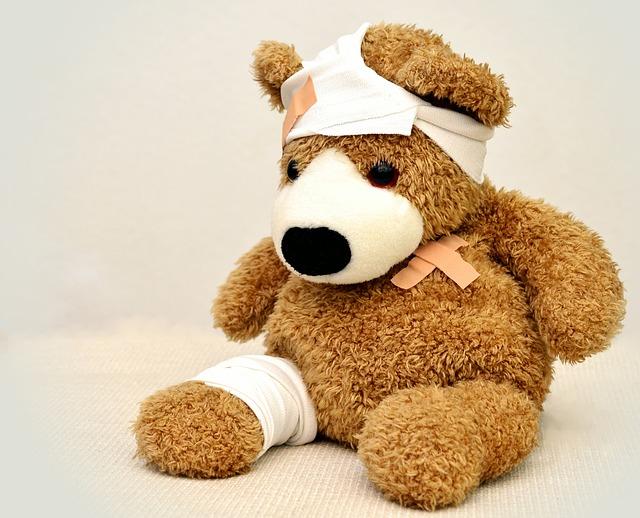Archive for September 2016
Scar Tissue
Scar tissue is natural. Whenever injuries occur inside the body, scar tissue forms, just as scars form on the surface of the skin when cuts or punctures are made. It can effect every part of the body, from organs to muscles to connective tissues and some people are more prone to it than others. After an injury has been sustained, and often times after surgery, scar tissue forms and adheres to the healthy tissue around them, creating stiffness in joints and pain, which often has no other reasonable cause. Nerves can often become trapped by this adhesion, creating trigger points that are extremely sensitive. Even repetitive activities such as typing can cause micro-trauma to the joints in the fingers, leading to the build up of scar tissue over time. So scar tissue is natural, but it is also insidious: we need to prevent our bodies from building up too much of it, otherwise it will limit our range of motion.
Chiropractic is excellent for preventing the build-up of too much scar tissue and from dispelling that which already exists. Techniques we use include:
- Active Release Technique
- Graston Technique
- Myofascial Release
Scar tissue is less elastic than standard muscle tissue (some estimates say around 60% as elastic), so an area full of scar tissue will therefore feel stiffer and achier. These techniques target adhesion and trigger points to break up the accumulating scar tissue. By removing forces which are actively pulling your body out of balance and limiting the range of motion in joints, we also contribute to spinal balance. The muscle tension that is indicative of scar tissue build up responds very well to our modalities at Scorca Chiropractic Center; give our office in Fremont a call and schedule an appointment today to start healing these injurious regions and opening them up to the influx of nutrients and oxygen that they need.
Dr. Francis Scorca, D.C.
Sticking with it: Exercise Edition
When it comes to exercising, commitment is the key. Not everyone is born with a gym rat mentality, but most of us realize that keeping muscles conditioned and maintaining a healthy weight are corner stones of a long, healthy life. Many adults are in the same boat: more work and less physical activity combine with a slowing metabolism to add pounds which equate to burden on the spine, especially in the lumbar region. As we get older and stiffer, our proclivity for activity decreases because it is hard to know where to start. At Scorca Chiropractic Center, we are here to help get you motivated and excited about the prospect of a slimmer body and a longer, healthier life.
The services we offer at our office in Fremont in support of your maintenance of a healthy weight include:
- Creating a personal strategy: you have been sitting too much, creating stiff muscles and a weak core. This damage needs to be slowly reversed so that your core can work for you. We help you find spinal balance, better posture and establish your core as a stabilizer to help share the burden of the upper body’s weight.
- Starting small: we help restore spinal balance through chiropractic adjustment, which in turn restores flexibility and range of motion. From this vantage point, we take you through basic calisthenics and breed a penchant for exercise that ensures you will keep coming back for more.
- Helping you overcome pain: stiffness and soreness are two things that hold people back, especially at the beginning. If we can help you overcome pain through chiropractic adjustment, spinal decompression and massage, you will be more likely to pursue an exercise plan.
For your health’s sake, we are your biggest fans! We want to establish health and well-being as institutions in your life, and we have the tools to do so. Stop being nervous and start on the road to a healthier you by calling our office today.
Dr. Francis Scorca, D.C.
Preventing Low Back Pain
Lumbar: the very word itself usually conjures an association with pain. That’s because we rarely ever talk about the lumbar region unless it is already causing us pain, and this attitude is symbolic of all self-inflicted afflictions of the lower back: for example, think of all the times people have told you to sit up straight (as a child) and yet we constantly ignore this advice and slouch because it is temporarily more comfortable. We only have ourselves to blame for the epidemic nature of lower back pain in America, and it is time we start taking the preventative measures that will keep our backs healthy and minds happy into old age.
The lumbar region is composed of five vertebrae, the largest of the spine, which are responsible for bearing the weight of the upper body and absorbing the stress and shock of daily movements, such as lifting and carrying heavy objects. Diverging from the spinal column at this point is a far-reaching network of nerves that influence many of our essential functions including the mechanics of leg movement. So, if we know that the health of this area must be critically important, we must make preserving its health a priority.
At Scorca Chiropractic Center, we apply the framework of, “knowledge is power,” to the lumbar region. In other words, don’t wait until your lower back starts causing you pain before you call up a health professional. Give our office in Fremont a call now and start on a proactive health plan that will prevent pain and keep you limber in old age. A plan for prevention includes muscle strengthening, proper posture, proper body mechanics, a good diet and regular light aerobic exercise. Filling in the gaps with exacting details is an individual science, and we promise to help you formulate a plan for success.
Dr. Francis Scorca, D.C.
Back to School Health
Back to school is an exciting and important part of the year. As temperatures cool down and we transition into a more stable school schedule, it is important to remember that your child’s spinal health is central to their physical and mental performance. Many factors play into this:
- Backpack form: a properly fitting backpack means the difference between your child carrying a properly supported load or a load of weight that is creating imbalance and strain on the supportive muscles and structures of a young spine.
- Importance of warming up: whether at the playground or on the sports field, make sure that your child is aware of the importance of stretching before vigorous activity.
- Nutrition and hydration: If you have control over your child’s diet, do not take it for granted. If your child eats at school cafeterias, which are not exactly known for their nutritious offerings, make sure you are not alloting money toward an unhealthy diet.
- Ergonomic work space at home: while the classrooms may not be geared toward proper support and posture, you can make the work space at home an optimal fit for your child.
At Scorca Chiropractic Center, we believe that you can keep your child excited about school by keeping them involved in their own health. Kids can be extremely creative when challenged, and we urge you to challenge themselves to stay healthy across the board this school year. For help getting creative in this regard, give our office in Fremont a call. We can help you and your child enter the school year on a firm foot forward.
Dr. Francis Scorca, D.C.
Chia!
Chia seeds are powerful: calorie for calorie, it ranks as one of the most nutritious foods on planet earth. These tiny black seeds of the chia plant are given to hyperbole: a scan across the nutrition facts reveals the following for 1 serving (1 ounce) of chia seeds.
- 11 grams of fiber
- 4 grams protein
- 9 grams healthy fat (half from omega-3s)
And varying percentages of the following minerals:
- Calcium
- Magnesium
- Manganese
- Phosphorous
- Copper
- Selenium
- Iron
They are also chalk-full of anti-oxidants which help to eliminate free radicals and prevent the oxidation of other molecules in the body. All of this for just under 138 calories. From a chiropractor’s perspective, chia seeds are important because the richness of minerals helps preserve bone density. The omega-3s are important for people looking to manage conditions relating to chronic inflammation.
Is it too good to be true? Absolutely not, and the news gets even better: they can be tasty too. 2 tablespoons constitute a serving and its up to you how to consume them. They can be added raw into just about any meal: a favorite of mine is mixing 2 tablespoons into oatmeal. The hot porridge helps to make the seeds mushy, and they mix in easier; as far as taste goes, you hardly even notice them.
For anyone looking to fortify their bones, regulate their nervous and immune systems and ease the discomfort associated with inflammation, chia seeds should be on the next shopping list.
Dr. Francis Scorca, D.C.
2 Liters a Day Keeps the Doctor Away
When it comes to boosting your health, few ingredients come with the essential benefits with so few side-effects as good old H2O. Whether you are seeking to lose or maintain weight, rehabilitate a long-standing injury, or simply function better, water may be the ingredient to look to. As Americans, we are chronically dehydrated. Here are some of the benefits of consuming your eight ounces, 8 times a day:
- Joint and cartilage maintenance: perhaps the most exciting from the chiropractor’s perspective. Cartilage needs water! A lot of joint stiffness and pain is down to dehydration: when they are dry, they get weak meaning your joints take a beating.
- Beating that tired feeling. The equation is simple, because every cell needs water: proper hydration=more energy.
- Weight management: water can help you feel more full and crave less food. Conversely, being hydrated also causes you to eat more, because your body is craving the energy it is lacking from hydration.
- Longevity and well-being: simply put, treating all your organs with the proper amount of water they deserve all the time helps you function better and maintain your well-being longer into life.
In terms of consumption, water should be metered throughout the day. Waiting til you are dehydrated and then chugging a liter of water is not exactly healthy or sustainable. You want your body to be topped up regularly with a reasonable quantity, so that it never has to go into conservation mode. Drinking more water is a large way you can impact your health with very little lifestyle adjustment. For more tricks to optimize well-being, call our office in Fremont and schedule an appointment today.
Dr. Francis Scorca, D.C.
Swimming for Rehabilitation
Swimming is a super activity: much like a smoothie can act as a vitamin cocktail, so can swimming be a boon for the body and mind. By reducing the force of gravity, it is one of the least-stress inducing activities for joints and the natural resistance provided by water helps tone many muscles we tend to neglect on a daily basis. It’s role as a health maintenance tool is well known, but how about its utility as an injury rehabilitation aid? Particularly pertaining to back injuries that involve pain, stiffness and limitations to range of motion, there are few activities that can match swimming for its rehab prowess.
- Weightlessness: the reduced gravity gives us a simulation of weightlessness that suspends much of the downward force on our bodies. This is why floating in water, especially warm water, feels good. You can use water for both exercise and therapy.
- Water resistance: as you go, many muscle groups are working in tandem and strengthening. The natural resistance of the water conditions muscles in a low-impact way.
- Active stretching: range of motion is one of the first things to go out the window when pain and stiffness sets in. Fight this occurrence by swimming: the different strokes provide enough movement to impact flexibility.
With more serious injuries, attempting swimming may be out of the question; before starting any new health plan to account for an injury it is important to have a discussion with a medical professional. At Scorca Chiropractic Center, we can evaluate the location and severity of the injury and help you create a plan that involves low-impact aerobic activity. From here, it is a matter of scaling up until you reach your previous standard for “normal activity.”



